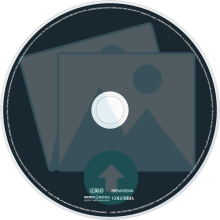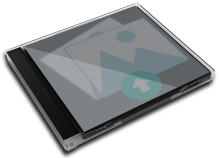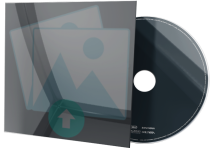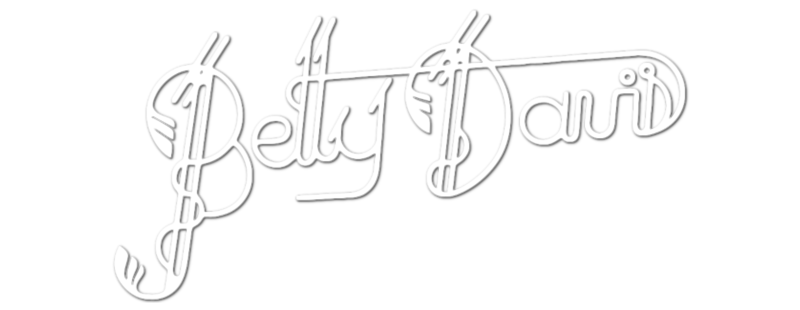Cover NOT yet available in
Join Patreon for 4K upload/download access
Your Rating (Click a star below)
![]()
![]()
![]()
![]()
![]()
![]()
![]()
![]()
![]()
![]()
Track List
01) Nasty Gal
02) Talkin Trash
03) Dedicated to the Press
04) You and I
05) Feelins
06) F.U.N.K.
07) Gettin' Kicked Off, Havin' Fun
08) Shut Off the Light
09) This Is It!
10) The Lone Ranger
01) Nasty Gal
02) Talkin Trash
03) Dedicated to the Press
04) You and I
05) Feelins
06) F.U.N.K.
07) Gettin' Kicked Off, Havin' Fun
08) Shut Off the Light
09) This Is It!
10) The Lone Ranger
4:43
4:48
3:47
2:49
2:50
4:25
3:13
3:59
3:31
6:17
Data Complete
 70%
70%
Total Rating
 70%
70%Total Rating
![]() (0 users)
(0 users)
Back Cover![]()
CD Art
3D Case
3D Thumb
3D Flat
3D Face
3D Spine
First Released
![]() 1975
1975
![]() Funk
Funk
![]() Gritty
Gritty
![]() Urban/R&B
Urban/R&B
![]() ---
---
![]() Medium
Medium
![]() Album
Album
![]() 0 copies
0 copies
Album Description
Available in:
Nasty Gal is the third and final studio album by American funk musician Betty Davis. It was released in 1975 on Island Records and was Davis' first album on a major label.
It failed commercially upon release, and after the failure of this album Island Records shelved her planned follow-up, Is It Love or Desire? Under pressure by the record company, Davis abandoned her music career altogether shortly after this album's release. It was reissued on Light in the Attic Records in 2009 on CD, and again in 2018 on colored vinyl in conjunction with record club Vinyl Me, Please, which has rekindled interest in the album by music critics and fans, generating favorable retrospective reviews.
Background
After the underground success of her previous two records, Davis toured extensively with a backup band called "Funk House" that included Nicky Neal, Larry Johnson, Fred Mills, and Carlos Morales. Her tours were marked by her exuding sexuality. When ABC acquired her previous label Just Sunshine and its parent distributor Blue Thumb Records, Island Records approached Davis with a buyout offer. After accepting, Davis started working on new material for an album. On Davis' previous two albums, she relied on a multitude of session musicians, but felt a close connection with Funk House, so she chose to record the album with them instead.

User Album Review
1975’s Nasty Gal is another classic from one of the founders of funk. Davis and her band are a little sleazy, a little sultry, and show some surprising range on an album newly reissued on vinyl.
Adecade ago, Light in the Attic set about reissuing the long dormant, early ’70s funk catalog of Betty Davis, starting with her self-titled 1973 opus. That album featured her standout “Anti Love Song,” a cover photo of the singer wearing a pair of thigh-high silver platform boots that Rick James probably wished he could have borrowed, and a backing band culled from a large swath of the Family Stone. Moving on to albums They Say I’m Different, Nasty Gal, and the previously unreleased Is It Love or Desire and Betty Davis: The Columbia Years 1968–1969, the whole project sought to clue in new audiences to the legacy of a singer formerly footnoted as the second wife of Miles Davis, who is said to have convinced her husband to change his tamer album title to Bitches Brew. Now, her 1976 album Nasty Gal, with its equally unsubtle title, is being released once again, this time as a long player. While the physical gratification of a deluxe vinyl treatment is reason enough for a new edition, it also marks a new occasion for listening, even more deeply and resonantly than its first reissue nine years ago.
What does it mean to be an artist ahead of her time—twice in her lifetime? In 1975, despite label support and heavy touring, Island Records’ release of Nasty Gal failed to take off in the way those behind it had hoped; shortly after, Davis receded from the public eye. Now at 72, she is the subject of a recent documentary (Betty - They Say I’m Different opened in Amsterdam in November) and otherwise leads a very private life in Pittsburgh. “I even turned your head around now,” Davis unleashes in the titular song, with characteristic formidable, seductive delivery, in what sounds now like lyric self-fulfilling prophecy. “You said I love you every way but your way/And my way was too dirty for you now.” In 2009, Nasty Gal continued the job of contextualizing Davis, placing her among peers like Parliament and the Isley Brothers; acknowledging her imprint on musicians from Rick James (“She was what funk was,” he has said), Chaka Khan and Lil’ Kim to Royal Trux’s Jennifer Herrema and, especially, on Prince, who said of Davis to a reporter in 2012: “This is what we aim for.”
To listen the record now—when the album shares a name with both a fashion brand inspired by Davis’ provocative, space-age style and a widely reclaimed slur uttered by the president of the United States—is another thing entirely. Nasty Gal is still as revolutionary and unbending as it was in 1975. In another preternaturally self-aware moment, amid the deep grooves of “F.U.N.K.,” Davis willfully seizes her place in the wider canon of funk, soul, and R&B: “Help me, Barry White!” she calls out and goes on to shout out to “Isaac Hayes, y’all,” Al Green, the O’Jays, Stevie Wonder, Tina Turner, and Ann Peebles, and ultimately, her good friend Jimi Hendrix (to whom she famously introduced her ex-husband; Miles doesn’t merit a shout-out in this anthem).
The musical roots of Betty Davis, née Betty Mabry, are not widely acknowledged in North Carolina, but she and the band she put together have deep ties to Reidsville, once a town of textile mills and cigarette factories founded on the border of Little Troublesome Creek (Davis also spent a lot of her childhood in Durham, N.C., where she leaned heavily on her grandmother’s record collection): “B.B. King, Jimmy Reed, Elmore James and all those people,” she once said. “I know some English guitarist who would love to get their hands on it.” Around the age of 12, she wrote her first song, “I’m Gonna Bake That Cake of Love.” The Mabrys moved to Homestead, Pa. where her father got a job in steel-boom Pittsburgh, and at 16, Davis took off for New York City. When she spotted her future husband at a club in the Village, she didn’t recognize the jazz trumpeter, but she liked his style; as the story goes, she told a friend she wanted to meet the “dude with the shoes.”
On Nasty Gal, her prowling caterwaul snakes and oozes through the album, over dirty bass and deep grooves. She trades lyrics with keyboardist Fred Mills on the raw, declarative statement of “Nasty Gal” and over a heavy riffing guitar on “Talkin Trash.” Image was central to the music: On the cover of Nasty Gal, Davis sheds her cosmic leotards and short-shorts for lacy lingerie and fishnets. She recruited a backing band from her home state—drummer Nicky Neal and bassist Larry Johnson were first cousins, Fred Mills lived in her hometown, and she added Carlos Morales on guitar. Davis choreographed their stage moves and insisted the band members play shirtless; she lathered the band members in baby oil so their muscles would shine under the lights. She wanted to change their name from Funkhouse to the Sleazes.
Nasty Gal is certainly in service of sleaze and of sex, but first and foremost, to classic, solid dance grooves that pulse under Davis’ snarl on “Shut Off the Light,” her bedroom vocals on “Getting Kicked Off, Havin Fun,” and the saucy, sultry “The Lone Ranger.” Davis has been chastised by some critics for her reliance on that howl; it’s her weapon of seduction and also her line of defense. But on this album, she briefly and astonishingly reveals a wider range. “You and I,” a lover’s lament about the impossibility of reconciliation co-written with Miles and arranged by Gil Evans, features a trumpet solo by him and orchestration by Gil Evans. It’s a gorgeously steamy slow burner of a ballad, the most lyrical song on the album, and feels spilled out of an open window on some city night. It’s Davis at her most vulnerable, as she sings, “I love you I love you I love you/But it’s so hard for me to be me I wish I could give to you/I’d be free I’d be free I’d be free.” And it’s also fleeting, followed immediately by the revved-up “Feelins,” which delivers Davis back to her foundational structure of gritty, fearless seduction over a strutting, percolating rhythm.
It’s tempting to wonder what might have been had Davis chosen or had the support to continue her career and perhaps to forge together some of these two poles of her work—the tough and the tender. Davis rose to fame but not widespread acceptance in an era when black women in this country were allowed to be seen but not heard—and certainly not to exercise artistic control as a musician. In the 1970s, the Rolling Stone Record Guide called Nasty Gal the work of a “black Marlene Dietrich”—a twisted show of admiration. But plenty of black audiences weren’t ready for Davis either—the NAACP urged a boycott of her work on the grounds that it perpetuated negative stereotypes about African Americans. For a woman, and especially a black woman in America in 1975, to openly sing about desire and sex with such ferocious power was most definitely ahead of the times. Even The New York Times, a year before Nasty Gal, acknowledged that Davis’ day would eventually arrive: “Miss Davis is trying to tell us something real and basic about our irrational needs, and Western civilization puts its highest premiums on conformity and rationality and rarely recognizes the Bessies or the Bettys until they’re gone.” May the record stand corrected.
SOURCE: https://pitchfork.com/reviews/albums/betty-davis-nasty-gal/
External Album Reviews
None...
User Comments


Available in:
Nasty Gal is the third and final studio album by American funk musician Betty Davis. It was released in 1975 on Island Records and was Davis' first album on a major label.
It failed commercially upon release, and after the failure of this album Island Records shelved her planned follow-up, Is It Love or Desire? Under pressure by the record company, Davis abandoned her music career altogether shortly after this album's release. It was reissued on Light in the Attic Records in 2009 on CD, and again in 2018 on colored vinyl in conjunction with record club Vinyl Me, Please, which has rekindled interest in the album by music critics and fans, generating favorable retrospective reviews.
Background
After the underground success of her previous two records, Davis toured extensively with a backup band called "Funk House" that included Nicky Neal, Larry Johnson, Fred Mills, and Carlos Morales. Her tours were marked by her exuding sexuality. When ABC acquired her previous label Just Sunshine and its parent distributor Blue Thumb Records, Island Records approached Davis with a buyout offer. After accepting, Davis started working on new material for an album. On Davis' previous two albums, she relied on a multitude of session musicians, but felt a close connection with Funk House, so she chose to record the album with them instead.
User Album Review
1975’s Nasty Gal is another classic from one of the founders of funk. Davis and her band are a little sleazy, a little sultry, and show some surprising range on an album newly reissued on vinyl.
Adecade ago, Light in the Attic set about reissuing the long dormant, early ’70s funk catalog of Betty Davis, starting with her self-titled 1973 opus. That album featured her standout “Anti Love Song,” a cover photo of the singer wearing a pair of thigh-high silver platform boots that Rick James probably wished he could have borrowed, and a backing band culled from a large swath of the Family Stone. Moving on to albums They Say I’m Different, Nasty Gal, and the previously unreleased Is It Love or Desire and Betty Davis: The Columbia Years 1968–1969, the whole project sought to clue in new audiences to the legacy of a singer formerly footnoted as the second wife of Miles Davis, who is said to have convinced her husband to change his tamer album title to Bitches Brew. Now, her 1976 album Nasty Gal, with its equally unsubtle title, is being released once again, this time as a long player. While the physical gratification of a deluxe vinyl treatment is reason enough for a new edition, it also marks a new occasion for listening, even more deeply and resonantly than its first reissue nine years ago.
What does it mean to be an artist ahead of her time—twice in her lifetime? In 1975, despite label support and heavy touring, Island Records’ release of Nasty Gal failed to take off in the way those behind it had hoped; shortly after, Davis receded from the public eye. Now at 72, she is the subject of a recent documentary (Betty - They Say I’m Different opened in Amsterdam in November) and otherwise leads a very private life in Pittsburgh. “I even turned your head around now,” Davis unleashes in the titular song, with characteristic formidable, seductive delivery, in what sounds now like lyric self-fulfilling prophecy. “You said I love you every way but your way/And my way was too dirty for you now.” In 2009, Nasty Gal continued the job of contextualizing Davis, placing her among peers like Parliament and the Isley Brothers; acknowledging her imprint on musicians from Rick James (“She was what funk was,” he has said), Chaka Khan and Lil’ Kim to Royal Trux’s Jennifer Herrema and, especially, on Prince, who said of Davis to a reporter in 2012: “This is what we aim for.”
To listen the record now—when the album shares a name with both a fashion brand inspired by Davis’ provocative, space-age style and a widely reclaimed slur uttered by the president of the United States—is another thing entirely. Nasty Gal is still as revolutionary and unbending as it was in 1975. In another preternaturally self-aware moment, amid the deep grooves of “F.U.N.K.,” Davis willfully seizes her place in the wider canon of funk, soul, and R&B: “Help me, Barry White!” she calls out and goes on to shout out to “Isaac Hayes, y’all,” Al Green, the O’Jays, Stevie Wonder, Tina Turner, and Ann Peebles, and ultimately, her good friend Jimi Hendrix (to whom she famously introduced her ex-husband; Miles doesn’t merit a shout-out in this anthem).
The musical roots of Betty Davis, née Betty Mabry, are not widely acknowledged in North Carolina, but she and the band she put together have deep ties to Reidsville, once a town of textile mills and cigarette factories founded on the border of Little Troublesome Creek (Davis also spent a lot of her childhood in Durham, N.C., where she leaned heavily on her grandmother’s record collection): “B.B. King, Jimmy Reed, Elmore James and all those people,” she once said. “I know some English guitarist who would love to get their hands on it.” Around the age of 12, she wrote her first song, “I’m Gonna Bake That Cake of Love.” The Mabrys moved to Homestead, Pa. where her father got a job in steel-boom Pittsburgh, and at 16, Davis took off for New York City. When she spotted her future husband at a club in the Village, she didn’t recognize the jazz trumpeter, but she liked his style; as the story goes, she told a friend she wanted to meet the “dude with the shoes.”
On Nasty Gal, her prowling caterwaul snakes and oozes through the album, over dirty bass and deep grooves. She trades lyrics with keyboardist Fred Mills on the raw, declarative statement of “Nasty Gal” and over a heavy riffing guitar on “Talkin Trash.” Image was central to the music: On the cover of Nasty Gal, Davis sheds her cosmic leotards and short-shorts for lacy lingerie and fishnets. She recruited a backing band from her home state—drummer Nicky Neal and bassist Larry Johnson were first cousins, Fred Mills lived in her hometown, and she added Carlos Morales on guitar. Davis choreographed their stage moves and insisted the band members play shirtless; she lathered the band members in baby oil so their muscles would shine under the lights. She wanted to change their name from Funkhouse to the Sleazes.
Nasty Gal is certainly in service of sleaze and of sex, but first and foremost, to classic, solid dance grooves that pulse under Davis’ snarl on “Shut Off the Light,” her bedroom vocals on “Getting Kicked Off, Havin Fun,” and the saucy, sultry “The Lone Ranger.” Davis has been chastised by some critics for her reliance on that howl; it’s her weapon of seduction and also her line of defense. But on this album, she briefly and astonishingly reveals a wider range. “You and I,” a lover’s lament about the impossibility of reconciliation co-written with Miles and arranged by Gil Evans, features a trumpet solo by him and orchestration by Gil Evans. It’s a gorgeously steamy slow burner of a ballad, the most lyrical song on the album, and feels spilled out of an open window on some city night. It’s Davis at her most vulnerable, as she sings, “I love you I love you I love you/But it’s so hard for me to be me I wish I could give to you/I’d be free I’d be free I’d be free.” And it’s also fleeting, followed immediately by the revved-up “Feelins,” which delivers Davis back to her foundational structure of gritty, fearless seduction over a strutting, percolating rhythm.
It’s tempting to wonder what might have been had Davis chosen or had the support to continue her career and perhaps to forge together some of these two poles of her work—the tough and the tender. Davis rose to fame but not widespread acceptance in an era when black women in this country were allowed to be seen but not heard—and certainly not to exercise artistic control as a musician. In the 1970s, the Rolling Stone Record Guide called Nasty Gal the work of a “black Marlene Dietrich”—a twisted show of admiration. But plenty of black audiences weren’t ready for Davis either—the NAACP urged a boycott of her work on the grounds that it perpetuated negative stereotypes about African Americans. For a woman, and especially a black woman in America in 1975, to openly sing about desire and sex with such ferocious power was most definitely ahead of the times. Even The New York Times, a year before Nasty Gal, acknowledged that Davis’ day would eventually arrive: “Miss Davis is trying to tell us something real and basic about our irrational needs, and Western civilization puts its highest premiums on conformity and rationality and rarely recognizes the Bessies or the Bettys until they’re gone.” May the record stand corrected.
SOURCE: https://pitchfork.com/reviews/albums/betty-davis-nasty-gal/
External Album Reviews
None...
User Comments

No comments yet...

